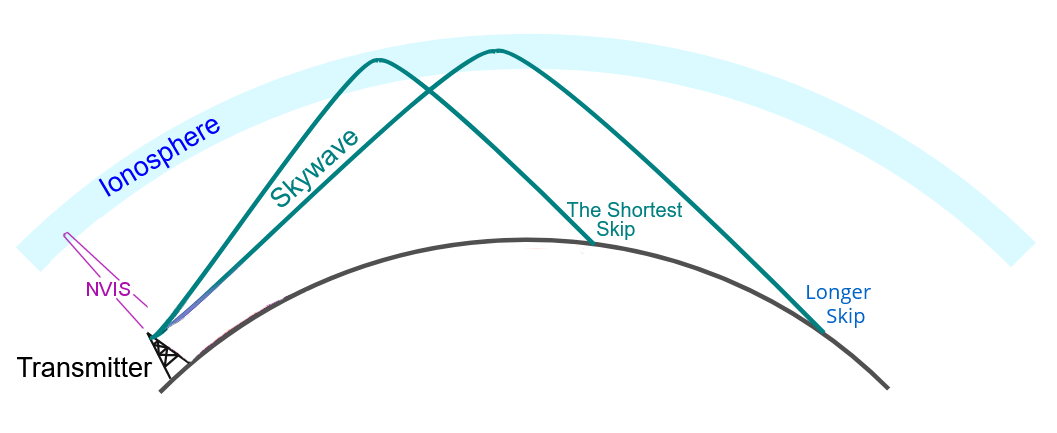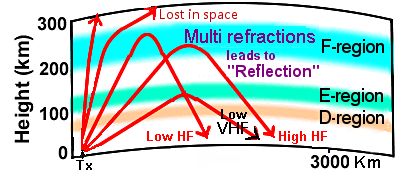 What is HF Radio Propagation?
What is HF Radio Propagation?
HF radio propagation refers to the behavior of High-Frequency (HF, from 3 to 30 MHz) radio waves as they travel through Earth's ionosphere, enabling them to travel over hundreds to thousands of kilometers.
The ionosphere is made up of several regions of ionized gas, each with different characteristics that affect how radio waves are refracted back to the Earth's surface.
During the day, the ionosphere is affected by the sun's radiation and becomes more ionized, which means that radio waves at certain frequencies are more likely to be bounced back to Earth. At night, the ionosphere becomes less ionized, and the frequencies that are returned back to Earth shift to lower frequencies.
The behavior of the ionosphere is affected by a number of factors, including the time of day, the season, and the location of the transmitter and receiver. As a result, HF radio propagation can be affected by a range of environmental conditions, including solar activity, geomagnetic storms, and weather conditions.
HF radio is used by a variety of organizations, including amateur radio operators, military and government organizations, and commercial operators such as airlines and shipping companies. Despite the development of new communication technologies, HF radio remains an important method of long-range communication, particularly in remote areas where other forms of communication are not available.
See also a brief introduction to High Frequency radio propagation, and an index of terms for HF Radio propagation.

